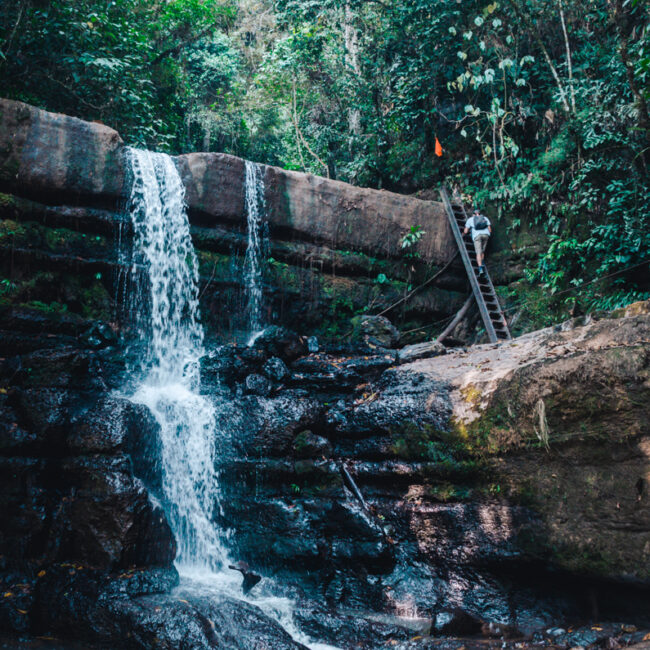

If you are planning to travel to Colombia in the near future, one of the things that might be on your mind is the safety in the country. Colombia has been in the picture in the past as a country with a lot of violence, especially Medellin. Medellin was even the most dangerous city in the early 1990s when Pablo Escobar was the king of Coke. But how is it today? Is Medellin safe to visit these days? Here is what you need to know!
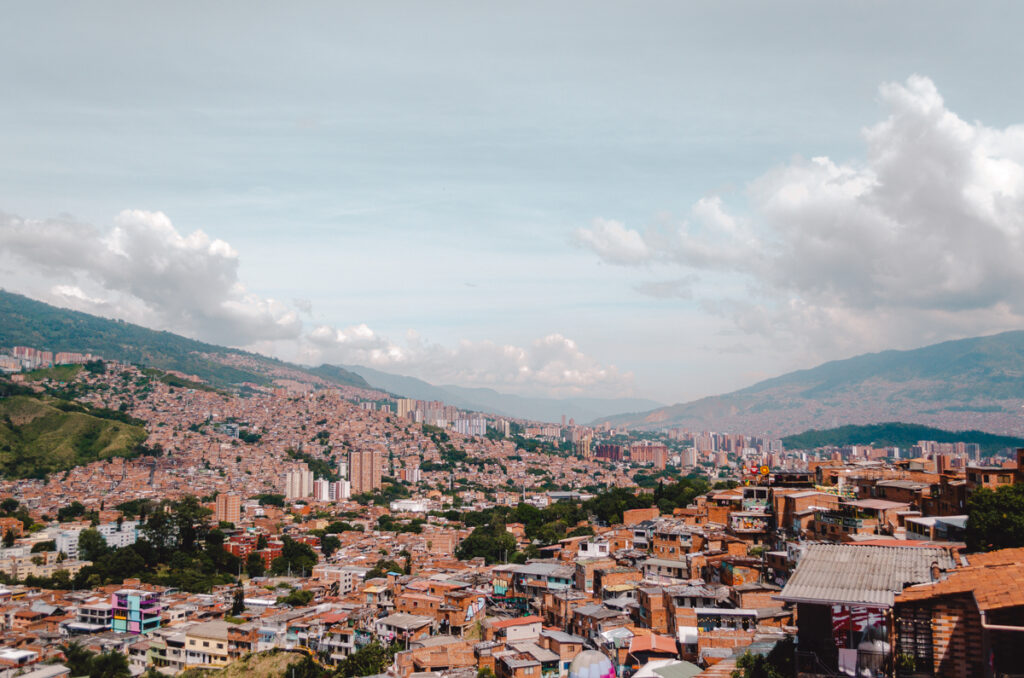
Medellin, Colombia
Medellin is nestled in the Aburra Valley of Colombia’s Andes Mountains. It is a city that is known for its remarkable transformation, especially in the past ten years.
Once infamous for being one of the most dangerous cities in the world due to drug violence in the 1990s, Medellin has reinvented itself as a beacon of innovation, culture, and social development.
This transformation is largely attributed to its innovative approaches to urban planning and social policy. It includes the pioneering use of cable cars and escalators as public transport to connect its hillside communities with the city center, enhancing mobility and integration across social divides.
A significant example of this change is Comuna 13, once considered one of the most dangerous neighborhoods in the world. Through innovative social and urban interventions, including the implementation of outdoor escalators and vibrant street art, Comuna 13 has reinvented itself.
The area is now a colorful canvas of murals that tell stories of resilience, peace, and transformation, attracting tourists from around the globe.
Medellin’s reputation and history are deeply intertwined with periods of intense violence and remarkable transformation. The city’s dark era, peaking in the late 1980s and early 1990s, earned it the notorious title of the most dangerous city in the world.
This period was characterized by rampant drug trafficking, guerrilla warfare, and paramilitary activities, with the drug cartels exerting significant influence over the city’s social and economic life.
The figure most synonymous with this era is Pablo Escobar, the infamous leader of the Medellin Cartel. Escobar’s cartel dominated the global cocaine trade in the 1980s and early 1990s, responsible for shipping massive quantities of cocaine to the United States and other countries.
His operation made him one of the wealthiest criminals in history, but it also brought devastating violence to Medellin. Escobar’s methods included assassinations, bombings, and bribery, leading to a period where the city experienced unprecedented levels of violence, including the murder of police officers, judges, politicians, and civilians.
Escobar’s reign came to an end on December 2, 1993, when he was killed in a shootout with Colombian National Police, a pivotal moment that marked the beginning of change for Medellín. Following his death, the city gradually began to distance itself from the legacy of drug cartels and violence.
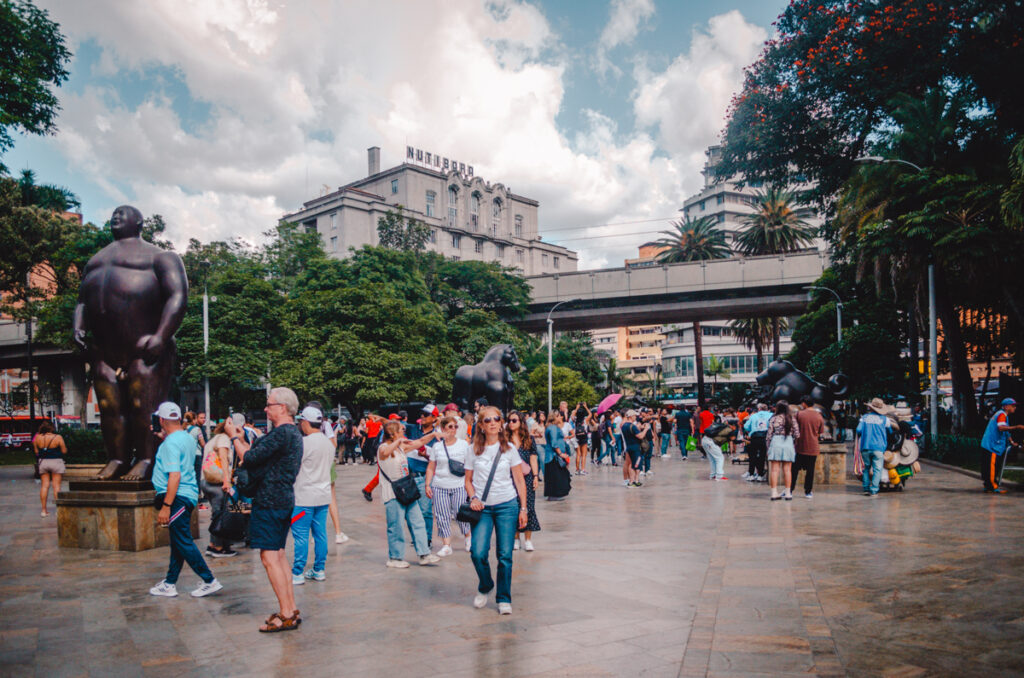
Plaza Botero, Medellin
Medellin has seen significant improvements in terms of safety and reductions in crime rates, thanks to coordinated efforts by local authorities, community organizations, and the city’s overall development strategy.
These efforts have been focused on tackling the root causes of crime, including poverty, inequality, and social exclusion, through education, urban renewal, and economic development programs.
Crime rates have decreased since the city’s most violent years in the late 20th century, but challenges remain. Petty crimes such as theft, pickpocketing, and scams are still present, especially in crowded areas and tourist hotspots.
Violent crime has also seen a reduction but can occur, particularly in certain neighborhoods that are advised against for nighttime visits or for tourists in general.
Safety in Medellin has seen significant improvement over the past few decades. It has become a popular destination for tourists who are drawn by its vibrant culture, beautiful landscapes, and impressive street art.
However, as with any large city, as a traveler or a resident, it’s necessary to take certain precautions to ensure your safety. While the crime in Medellin has reduced, it’s not completely gone and certain areas are better avoided.
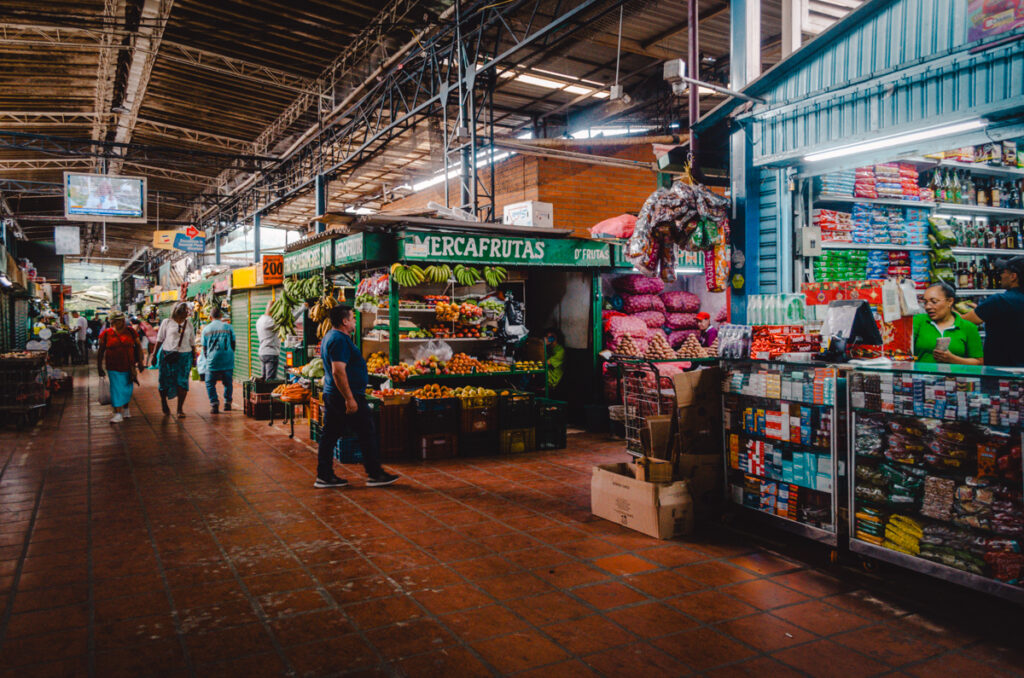
Minorista Market, Medellin
Medellin’s transformation over the past couple of decades has made it a beacon of urban innovation and resilience. This transformation has led to the emergence of two safe neighborhoods that are popular among tourists and expatriates.
Here are the safest areas in Medellin and the reasons why they are considered safe:
El Poblado is often regarded as the safest neighborhood in Medellin. It’s a more upscale area and it hosts a large portion of the city’s dining, shopping, and nightlife venues.
The presence of upscale hotels and residential buildings, along with private security and a strong police presence, contributes to its safety. El Poblado is the area where many expatriates choose to live, which has helped in establishing a community vigilant about safety and security.
This area is known for Parque Lleras, a hotspot for nightlife, and the Golden Mile, a stretch filled with commercial and business centers.
Laureles is a residential and commercial neighborhood known for its tree-lined streets, parks, and relaxed atmosphere. It has a strong community feel, which contributes to its safety.
The neighborhood is less touristy than El Poblado, offering a more authentic living experience while still maintaining high safety standards. The community is active at all hours, which means the streets are rarely deserted, adding to the overall security.
Laureles is famous for its circular streets and offers a variety of cafes, restaurants, and recreational spaces, making it a pleasant area for families, individuals, and travelers.
This is the area I personally stayed at in Medellin and I didn’t feel unsafe for a second!

There are lots of local birds in Medellin
What type of traveler are you in Medellin? Are you a family with kids? A female solo traveler? Or a digital nomad looking to spend a few months here? Here are the best safety tips for each of these categories!
Yes, Medellin is generally safe for tourists, thanks to significant efforts by the city to improve safety and security over the past decades. The city has transformed from its troubled past and is now a popular destination known for its rich culture, innovation, and friendly locals.
Tourists are drawn to its beautiful “eternal Spring” weather, impressive street art, and attractions such as the Botanical Gardens of Medellin, the Explora Park, and the vibrant neighborhood of El Poblado.
However, as in any major city, safety can vary by area, and as a tourist, you need to take standard precautions to ensure your safety. I’ll get into some safety tips later in this post and also if any areas in Medellin need to be avoided.
Traveling alone to Medellin can be a safe and rewarding experience with the right precautions. The city has made remarkable strides in improving safety and is welcoming to solo travelers, offering a mix of urban culture, innovation, and natural beauty.
However, as with traveling solo to any large city, it’s important to be mindful of safety practices to ensure a pleasant visit. Trust your instincts, don’t display expensive items like jewelry in public, and stay in a safe accommodation in El Poblado or Laureles.
Medellin has become increasingly safe for solo female travelers, reflecting the city’s broader transformation and efforts to improve safety and public spaces.
Many solo female travelers have visited Medellin and had positive experiences, enjoying the city’s culture, innovation, and natural beauty.
However, as with traveling solo anywhere, it’s important to take specific precautions to ensure a safe and enjoyable trip.
As a solo female traveler, choose your accommodation wisely (preferably a place with positive reviews from previous sole female travelers), avoid walking alone at night, use Uber or Didi instead of untraceable taxis, and dress rather conservatively to avoid unnecessary attention.
Yes, Medellin is safe for families, with many local and visiting families enjoying the city’s diverse offerings and attractions.
Medellin offers numerous family-friendly activities like parks, museums, and cultural events that cater to all ages. However, as with any major urban area, families need to take certain precautions to ensure a safe and enjoyable visit.
Choose a safe area to stay in with your family, engage in family-friendly activities like Explora Park and Park Norte avoid flaunting expensive items.
If you are still looking for nice accommodation for your family in Medellin, try Vrbo. You can find great options here ranging from a cool apartment in Laureles to a house with a jacuzzi in El Poblado.
Medellin has become a popular destination for expats and digital nomads, thanks to its mild climate, affordable cost of living, vibrant culture, and the welcoming nature of its people.
The city has made significant strides in improving safety and quality of life, making it a compelling choice for those looking to live abroad.
Most digital nomads and expats prefer to live in fancy El Poblado, however, if I would stay in Medellin long-term, as a conscious traveler, I would opt for Laureles. It has a more local vibe, shops, and supermarkets nearby and it harbors lots of great vegan restaurants in Medellin to choose from.
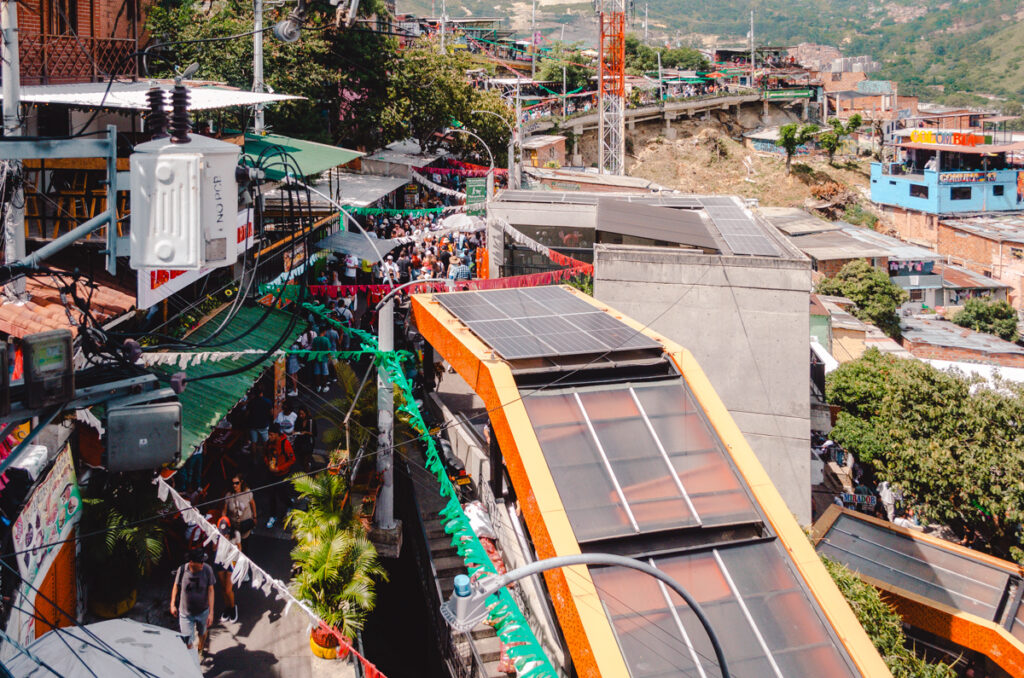
The Comuna 13 escalators
Comuna 13, once known as one of Medellin’s most dangerous areas, has undergone a significant transformation over the past two decades and has become a symbol of resilience and innovation.
This neighborhood, located on the western slopes of the city, is now one of Medellín’s most popular tourist destinations, known for its vibrant street art, outdoor escalators, and community projects.
Today, Comuna 13 is considered safe for visitors, especially during daylight hours when the area buzzes with guided tours, street vendors, and tourists exploring the famous graffiti and murals that tell the story of the community’s past struggles and hopes for the future.
The presence of tourists has helped spur local economic development, with many residents opening cafes, souvenir shops, and offering guided tours.
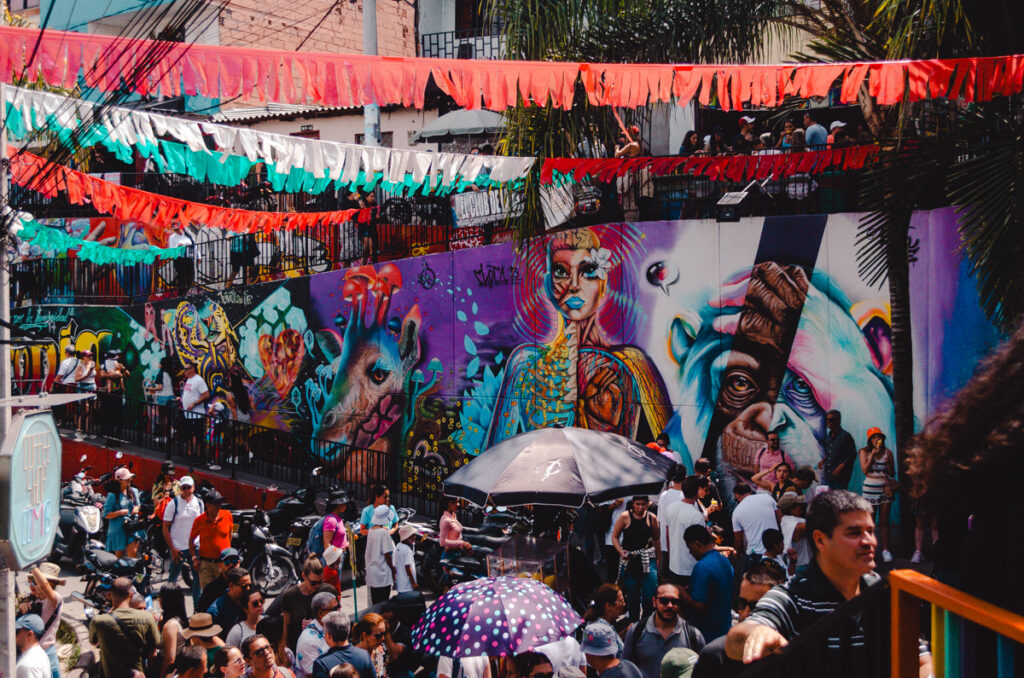
Medellin, Colombia: Comuna 13 Street Art
Even though Comuna 13 is regarded as a safe area today, here are a few things to keep in mind:
Lastly, there’s also still a dark side to tourism in Comuna 13 and to Medellin in general. I will highlight in later in this post.
Public transport in Medellin is generally considered safe and is praised for its efficiency and cleanliness. The city’s metro system is a point of pride for locals, offering an extensive network that connects various parts of the city, including suburbs on the hillsides, making it a reliable option for getting around.
The system is not only accessible but also guarded by police, ensuring a higher level of safety for passengers. Additionally, Medellín’s transport system includes buses and cable cars, which have been instrumental in connecting previously neglected areas to the city center, further enhancing the accessibility and convenience of public transport.
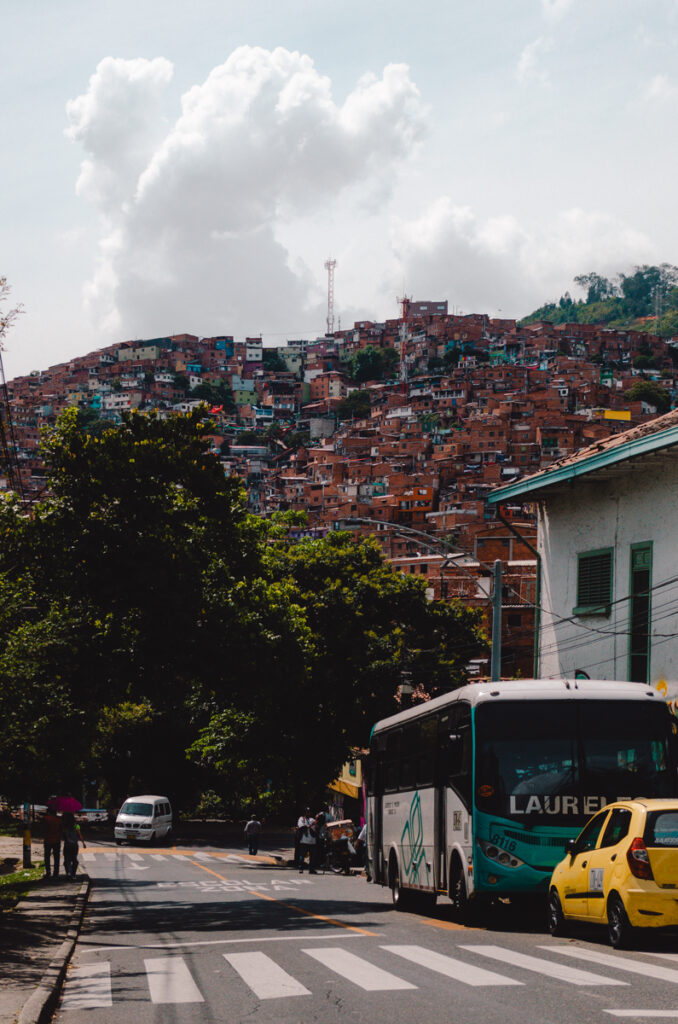
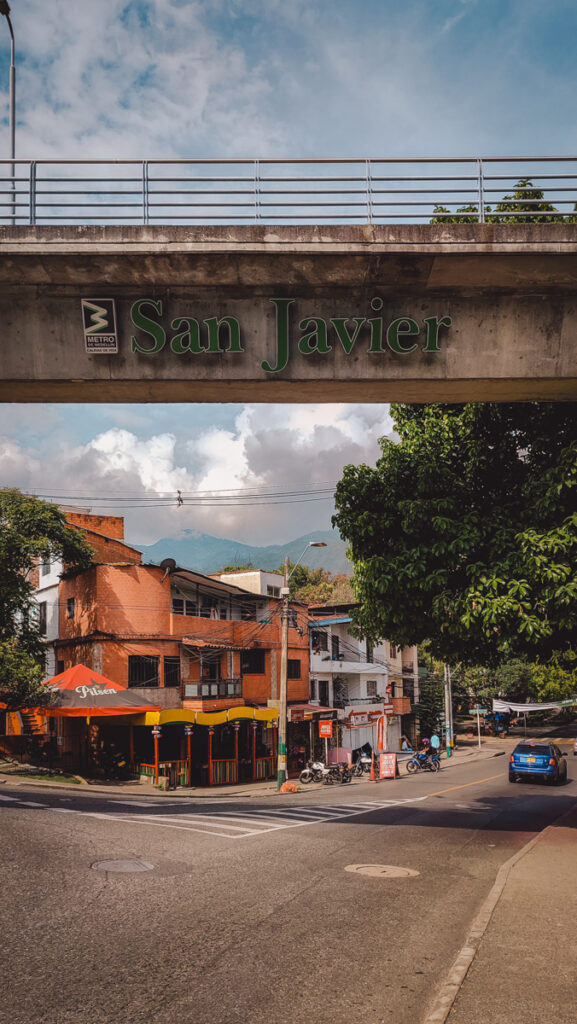
Bus and metro in Medellin
Overall, Medellin’s public transport system is considered very safe, clean, and extraordinarily efficient, making it an excellent option for both residents and visitors to navigate the city.
I’ll get into each of the transport options in more detail below. I’ll also include walking as a mode of transport here since you will probably walk a lot in Medellin too!
Walking around Medellin is generally considered safe, especially in areas popular with tourists and during daylight hours.
Neighborhoods like El Poblado, Laureles, and certain parts of the city center (La Candelaria) are known for their safety and vibrant atmosphere, attracting both locals and tourists.
These areas are well-patrolled, have a significant police presence, and are bustling with activities, which generally contributes to a safer environment.
During the day, I have never felt unsafe in Medellin, and even in Laureles in the evening, I felt completely safe walking around in the early evening to go out for dinner.
Going out at night in Medellíin is generally safe, especially in tourist-friendly neighborhoods such as El Poblado, Laureles, and Envigado.
These areas are known for their vibrant nightlife, including bars, clubs, and restaurants, and attract both locals and tourists. The presence of other people, along with a generally vigilant police force, tends to create a safer environment.
Be aware though that certain areas, like Parque Lleras in El Poblado, are popular for nightlife but can become rowdy. They are known spots for pickpockets and other petty criminals looking for opportunities. While the area is generally safe, it’s wise to remain vigilant, especially as the night progresses.
Also, if you are far away from your accommodation and want to get home, opt for ride-sharing services or taxis from reliable companies, especially late at night, instead of walking long distances or using public transportation.
The Medellin Metro is widely regarded as safe, clean, and efficient, making it a preferred mode of transportation for both locals and tourists. The system is a point of pride for the city, known for its cleanliness and the respectful behavior of its users.
The metro connects various parts of the city, including major neighborhoods, and is patrolled by police and local workers, contributing to its safety.
The metro system includes not only trains but also cable cars (MetroCable) and trams (Tranvia), extending its reach to neighborhoods situated on the city’s hillsides, which were previously less accessible.
These additional services have been praised for their safety and for providing spectacular views of the city. The entire system is well-integrated, allowing for easy and safe travel across Medellin.
Overall, the Medellin Metro is considered a safe option for getting around the city, However, as with any public transportation system, there are precautions to take, especially concerning petty crime.
The bus system in Medellin is considered safe, but, as with any mode of public transportation, it requires some level of caution and awareness.
Medellin’s buses connect various parts of the city, including areas not serviced by the metro, making them a vital part of the city’s public transportation network.
There are a few different types of buses in Medellin:
While the buses are safe to use, it’s important to keep personal belongings secure and be vigilant against pickpocketing, especially in crowded conditions or in busier areas.
It’s also advisable to have small change ready for fares to avoid showing a wallet full of bills.
Taking taxis in Medellin is generally considered safe, especially if some basic precautions are taken.
However, there have been reports of isolated incidents where taxi drivers have taken longer routes or have been involved in robberies or assaults on their passengers. These things happen in all large cities across the world though and are not isolated cases in Medellin.
Here are a few tips for using taxis safely in Medellin:
I have personally used Uber to get around Medellin and didn’t feel unsafe for one second. The drivers were friendly and professional and were curious about our nationalities and our trip through the country.
Didi is supposed to be a cheaper local version of Uber but for some reason, I was unable to download it to my cellphone. Cabify is a third Colombian ride-hailing app.

Iguana in the botanical garden of Medellin
Medellin is prone to natural disasters, mainly due to its geographical location and urbanization patterns.
Due to climate change, the city faces challenges such as heavy rainfall leading to landslides, especially in areas with steep mountain hillsides and jagged ravines where around 180,000 families live in high-risk zones.
Efforts are being made to mitigate these risks, including educating residents about potential dangers and relocating families from high-risk areas to safer public housing projects.
In terms of seismic activity, Medellin is located within the Andean system, part of the “Circum-Pacific Ring of Fire,” known for seismic hazards.
However, the city is situated on a giant block of andesite, a type of igneous rock that is hard and resistant to seismic motion, which makes it relatively safer from major seismic disasters compared to other regions.
Overall, even though there are some risks, you shouldn’t be too worried about getting caught in a natural disaster in Medellin.
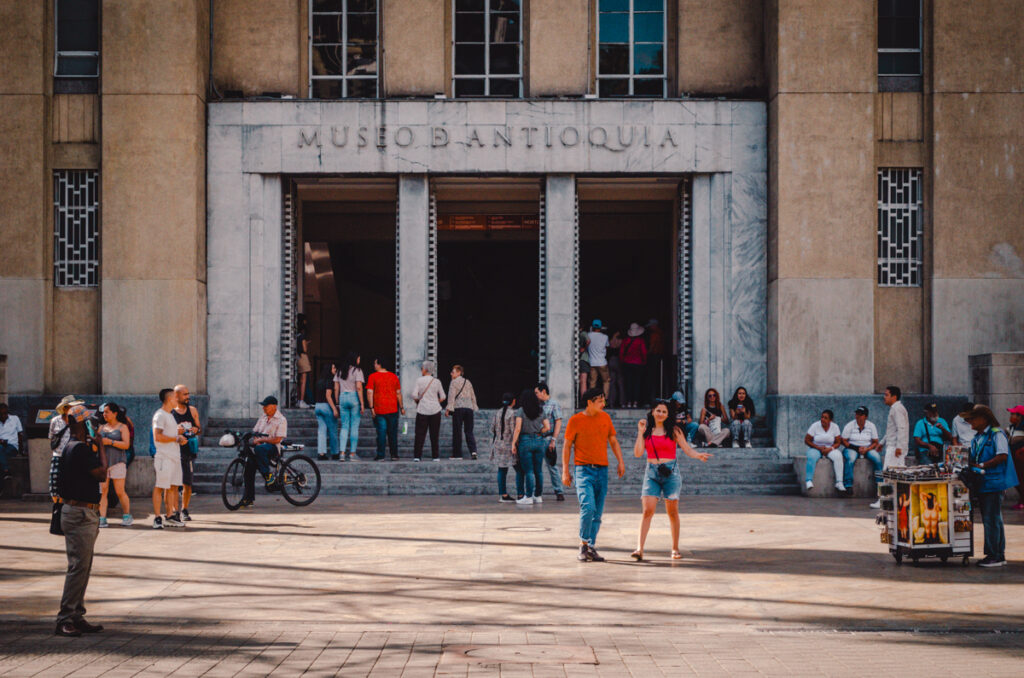
Museum of Antioquia, Medellin, Colombia
In Medellin, like any major city, some areas are considered less safe for tourists, especially after dark.
The downtown area, known as El Centro or La Candelaria, is often mentioned as a place where tourists should be cautious. While it’s the cultural and commercial heart of the city, bustling with activities during the day, it can become riskier at night.
Issues such as pickpocketing, theft, and armed robberies have been reported, particularly after dark. As a tourist, you are advised to be very cautious if you choose to visit downtown Medellin at night, and it’s recommended to use reputable transportation like Uber for getting around, minimizing time spent on the streets.
During the day however, La Candelaria is extremely busy but feels quite safe. There are a lot of tourists, especially around Plaza Botero.
The only place I personally felt a little unsafe was the road from La Candelaria to Minorista Market. Quite a few homeless people live around the Avenida De Greiff and conditions there are bad.
There is not much public information about the various comunas in the hills and their safety. My advice is to only visit these areas with a local or a tour company and inform yourself well before heading out.
Aside from El Poblado and Laureles, there are quite a few other neighborhoods in and around Medellin that are considered safe for tourists like most parts of Belen, Envigado, and Sabaneta.
Medellin seems a great example of resilience and innovation, drawing tourists worldwide with its vibrant culture, stunning landscapes, and progressive urban development. But, unfortunately, it’s not all roses.
Beneath its celebrated transformation lies a complex interplay between tourism and criminal governance that shapes the city’s socio-economic landscape today.
As Medellin emerged as a major tourist destination, especially in formerly marginalized neighborhoods like Comuna 13 and the infamous Barrio Pablo Escobar, the criminal gangs still operating in the city saw a great chance to take advantage of that.
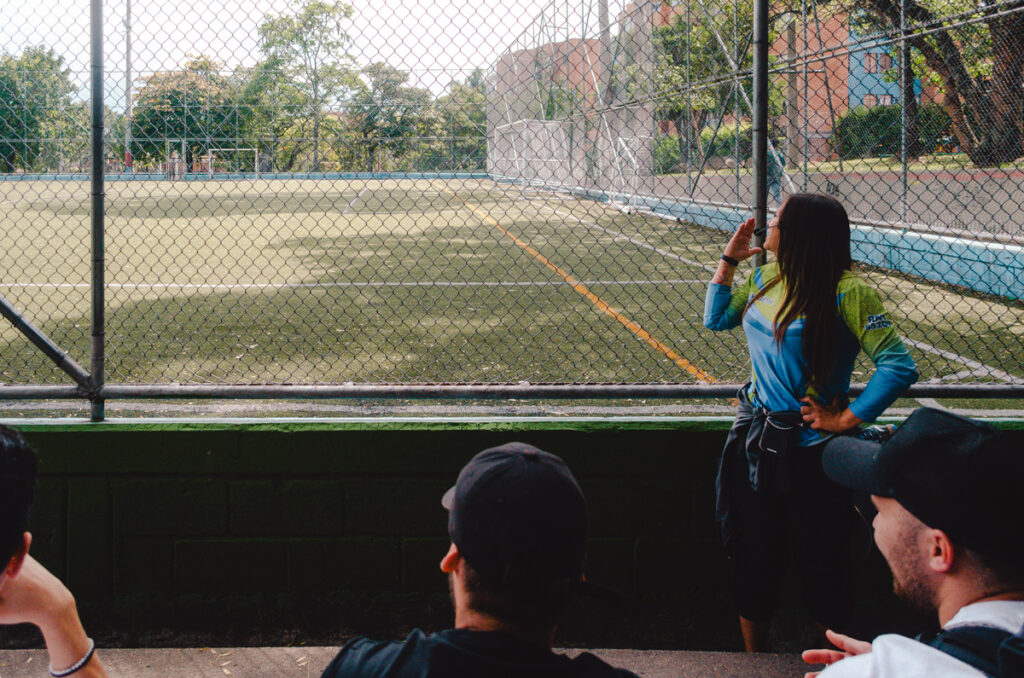
Our Zippy tour guide to Comuna 13
These groups, leveraging the tourism boom, have instituted a system of extortion, subtly integrating into the economy while providing a degree of security for visitors. This paradoxical role of criminal actors challenges the city’s narrative of transformation, revealing a nuanced reality where progress and exploitation coexist.
In practice, every business in the neighborhood needs to pay a weekly or monthly tax to these gangs in return for safety and protection. In Comuna 13 there are currently 3 gangs controlling the neighborhood.
This dynamic raises important questions about urban development, governance, and equity in Medellin. While the city has made remarkable progress regarding innovation and social urbanism, the persistence of criminal influence highlights the ongoing struggles to ensure equitable benefits for all residents.
As travelers, it’s important to be aware of these things to get a deeper understanding of the city’s resilience and the complexities of its transformation.
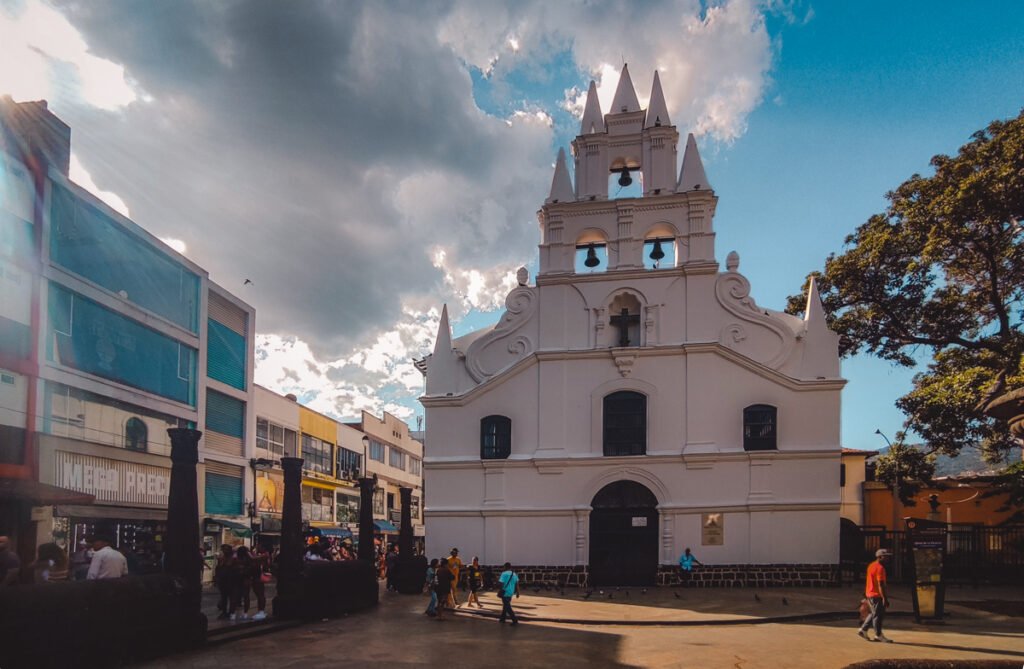
Parroquia de la Veracruz, Medellin
Traveling to Medellin offers a unique opportunity to experience a city known for its cultural vibrancy, innovation, and transformation.
Here are specific safety tips to keep in mind when visiting Medellin!
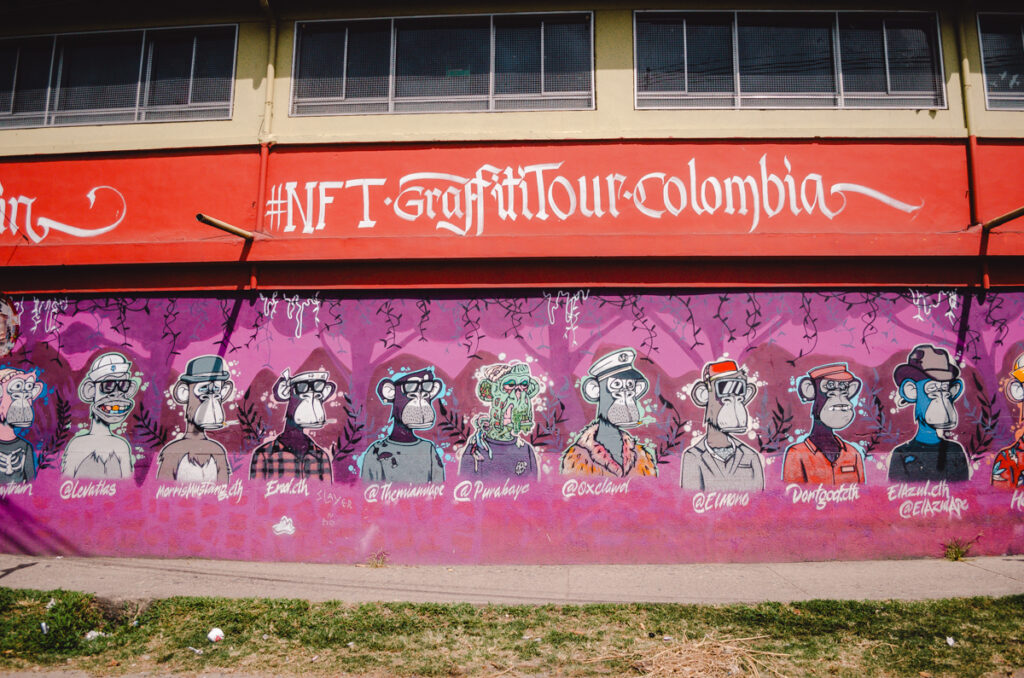
Comuna 13 NFT Graffiti in the streets
Lastly, here are some answers to the most frequently asked questions about safety in Medellin!
Medellin is generally safe for Americans who exercise standard safety precautions, such as staying in well-known tourist areas, using official transportation, and avoiding displays of wealth.
In Medellin, the tap water is generally considered safe to drink. The city has good water quality, which meets national and international standards. However, as a traveler with a sensitive stomach, you might prefer to start with bottled water and gradually adapt to tap water during your stay.
→ Also read: Can You Drink Tap Water in Medellin?
Downtown Medellin (La Candelaria) has seen significant improvements in safety over the years, but it still requires caution, especially after dark. While daytime visits can be safe for exploring attractions, it’s advisable to be more vigilant at night.
In Medellin, the safest neighborhoods for visitors and expats include:
These areas boast lower crime rates, a higher standard of living, and a welcoming community for foreigners.
Safety can vary widely based on specific areas within each city and individual behaviors. Medellín and Cartagena both have safe areas popular with tourists, like El Poblado in Medellin and the walled city in Cartagena. However, both cities require caution, especially at night and in less touristy areas.
Both Medellin and Bogota have areas that are safe for tourists, as well as areas that require more caution. Medellin often receives praise for its public safety initiatives and lower crime rates in tourist-friendly areas compared to some parts of Bogota.
However, personal safety depends on taking precautions and staying informed.
Medellin has undergone significant transformation and is now recognized for its innovation, culture, and tourism. While it has moved past its reputation from the 1990s, like any major city, it still has areas of concern and you should exercise standard urban safety precautions, especially in less tourist-oriented neighborhoods and after dark.
Medellin is a wonderful city in Colombia and is overall pretty safe compared to other places in the world today. It has definitely shook off its reputation, being the most dangerous city in the world, from back in the 1990s.
Even though safe to visit as a tourist, there are still concerns and challenges to be overcome, like the criminal gangs extorting the local business in areas like Comuna 13.
Let me know in the comments below if you have any questions or drop me a message through my contact page.
Also, don’t forget to check out my resources page with my favorite booking platforms and tips to start planning your trip. Additionally, have a look at my favorite travel gear if you want to pack more consciously!
ENJOY!
Disclaimer: This post may include affiliate links. If you click on them, I may receive a commission at no extra cost to you.

Hi! I am Annelies and this is Travelers & Dreamers, a blog about conscious travel which means traveling in a more mindful way, with a positive impact on the world and yourself!
On this website, I cover different topics like slow travel, plant-based food guides, responsible travel, sustainable packing, eco-travel, and more!
Latest Posts


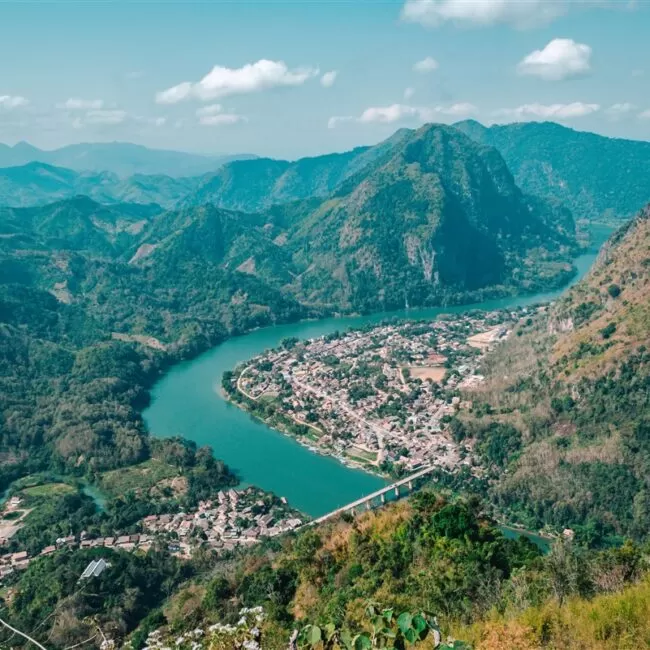
15 Best Things to Do in Nong Khiaw, Laos (2024)

Santa Rita, Salento: All You Need to Know
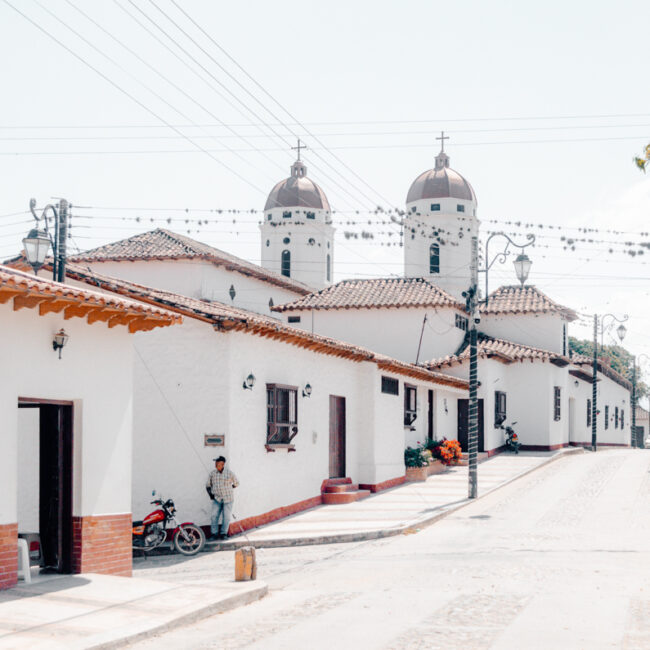
La Playa de Belen, Colombia: An Easy Travel guide!
Do you want to receive my latest finds on conscious and sustainable travel directly to your inbox? Subscribe here!
© COPYRIGHT TRAVELERS&DREAMERS, 2023.